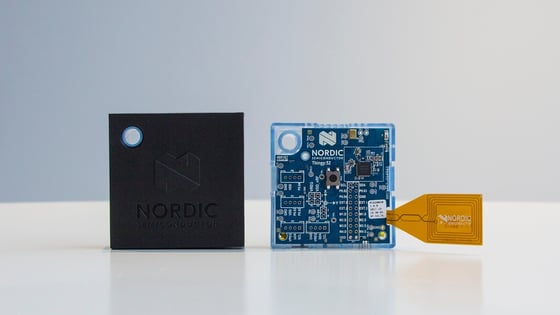Back to articles
Rapid prototyping: Develop the next great IoT app

With 30 billion connected devices expected by 2020, IoT apps will need to be developed fast. But do we have the talent and time to meet that demand?
No one can predict exactly where the IoT road will lead us. Growth continues at a rapid pace, and opportunities for developers of all types are increasing. Hardware, software and full-stack developers will continue to be in high demand for a long time to come.
Visit our resource page on wireless connectivity
Dealing with a future skills shortage
One big issue likely to emerge with the continued growth of IoT and connected devices is a lack of suitably qualified and experienced hardware engineers. Unlike software, where it’s possible for people to teach themselves easily and cheaply with nothing but a computer and some free time, hardware development requires a lot more investment in terms of time and money.
A similar problem comes for existing app developers who already have the knowledge and the ideas to make a great product but lack the time or money to acquire the hardware knowledge from scratch.
From choosing the most appropriate sensors and connectivity options to optimizing power consumption and battery life, hardware engineers bring valuable input to any IoT project.
Leverage existing products and platforms
One solution to the skills shortage is to take advantage of some of the products and services designed to fill gaps in hardware and software development.
If This Then That (IFTTT) is a simple web-based platform that hooks together various apps, web services and IoT devices. This ranges from simple things like ‘automatically post my Instagram pictures to all other social platforms’ to more complex tasks like ‘turn on my exterior light when my pizza order is on the way’.
IFTTT can act as a bridge between your app or device and other apps or devices. It knows how to work with cutting-edge technology such as Amazon Echo so, if you’re having trouble getting your product or app to work with Alexa directly, you can utilize IFTTT as a stop-gap measure.
On the hardware side of things, our very own Thingy:52 is an all-in-one solution for helping get started on hardware projects.
> Read more: Develop IoT products with ease

Containing many environmental sensors and outputs including sound and light, the device functions as a Swiss Army Knife for the world of IoT development. Using a Thingy allows you to focus on developing apps and/or establish what hardware functionality your product needs before committing to more expensive development.
Also from Nordic Semiconductor, the nRF Cloud allows easy connectivity and configuration of Bluetooth IoT prototypes in the cloud, with no coding required.
Rapid prototyping
Using the tools and services that other people provide makes it much easier to set up a rapid prototyping process. No matter where your skills exist or fall short, there’s a product that can plug the gaps to ensure that you get your product developed as quickly as possible.
> Read more: Get started with the Nordic Thingy
> Watch: Nordic Thingy tutorials on YouTube
You can get halfway to a finished product, with a proof of concept and an idea of commercial success, without having to invest anything in your own hardware.
Products and services such as IFTTT and the Nordic Thingy are not designed to replace development of your own hardware and software, but they can play an important role in rapid prototyping, testing out ideas and getting your products to market more efficiently.
> Read more: Nordic Thingy blogs on the Nordic Developer Zone


